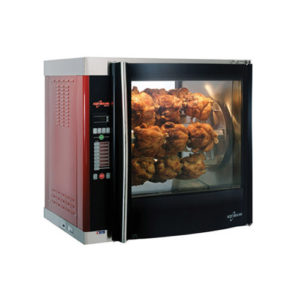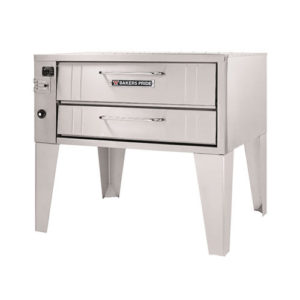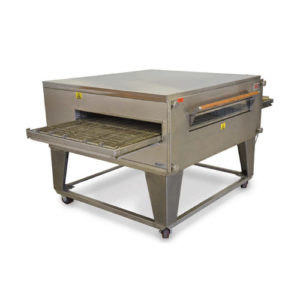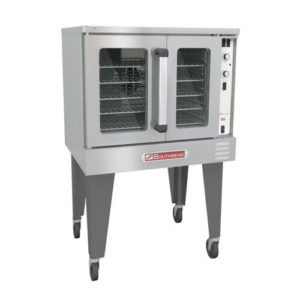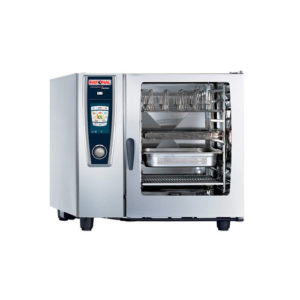26 Jun, 2018
Commercial Oven Maintenance
After having purchased your commercial oven, you’ll want to make sure that you maintain it in good condition to prevent costly repairs. Always read the owner’s manual of your particular oven for the specifics on how to properly maintain the oven, but also, don’t be shy about approaching your supplier with questions. Most suppliers are happy to offer post-purchase information as they have an intimate knowledge of the products they sell and have likely dealt with faulty, broken, and ill-maintained products in the past.
General Maintenance Tips
Oven Door Maintenance
Over time, many commercial ovens develop cooking and heat inefficiencies. For example, you may begin to notice that it takes longer to cook than it did when you first made your purchase. You may also begin to notice that your heating costs have risen, and that there appears to be diffuse heat around the oven. These heating issues develop due to a loose-fitting oven door seal.
To maintain the tight fit of your oven door seal, make sure to a) run regular checkups of the seal, and b) to avoid putting too much force on the oven door. Applying too much force to the oven door (whether by swinging it open wildly or by hanging heavy objects off of the door) will result in hinge loosening, which will eventually loosen the oven door seal. To check the tightness of the seal, some suppliers recommend that you stick a paper between the door seal (if it can slide in and out without issue, then the seal is too loose). The gasket or hinge can be replaced if the seal is loose.
Calibrated Thermostats
Commercial oven use may become inefficient over time as thermostats become badly calibrated. You should check to see if your thermostats are properly calibrated every few months. To calibrate, use an internal oven thermometer and compare to the set temperature. If there is a difference, then you may need to recalibrate the oven controls or otherwise replace your thermostat.
Calibrated Programs/Buttons
Using preset programs/buttons for cooking (a 5 minute bake, for example) may become badly calibrated over time. You may find that, some years down the line, your oven isn’t cooking as well with the preset program/button. Look into re-calibrating the settings.
General Cleaning Tips
When your oven isn’t cleaned properly, you’ll fin d performance problems, issues with flavor (old food particles that remain on the inside), even smoke. Avoiding these issues is a simple matter of scheduled cleaning.
First, the over interior should be cleaned immediately if there is a spill. Spills require immediate cleaning because they can become more difficult to clean at the end of the day, after they have been cooked into the oven interior. Spills also have negative effects on oven performance, which may throw off a well-functioning kitchen.
Second, make sure to clean your oven interior at least once everyday. Most commercial ovens can be cleaned with a detergent, but check your owner’s manual in case the oven demands a different cleaner. Any leftover crumbs should be cleaned away – these leftovers are what cause flavor and smoke issues, since the crumbs cook further, mixing their aroma with whatever is presently cooking. Overcooked crumbs eventually burn, resulting in smoke. Also, be sure to remove your oven racks and clean them separately. The racks can be dunked in a hot tub of water and boiled with soap to remove especially difficult grime.
Third, make sure to perform a more significant clean at least once a month. Even if you clean daily, some food particles, chunks, and spills may have been left behind, and these can become extremely difficult to remove using your daily cleaning procedures/detergent. Your owner’s manual should describe the best deep cleaning procedures and the safest chemicals for your particular oven.
Self-Cleaning Ovens
Some suppliers offer self-cleaning versions of their ovens. Though self-cleaning ovens tend to be more expensive than their less-featured equivalents, they can save you daily labor costs from not having to pay workers to stay longer at the end of the day to clean. Keep in mind, however, that self-cleaning may not be adequate for long-term maintenance. Self-cleaning works better as a daily substitute. For monthly or weekly deep cleanings, you should clean the oven as per the owner’s manual, without the aid of automated self-cleaning.
Specialized Oven Cleaning Tips
Rotisserie Ovens
Rotisserie ovens can pick up a lot of grease and grime over the course of the day, and the rotors/spits tend to become uniformly dirty due to the function of a rotisserie (grease may drip from meats as they are rotating in the oven). Though there seem to be a lot of moving parts, rotisserie ovens are not especially difficult to clean. At the end of each day, remove the spits and the rotors from the oven and soak them in a sink with cleaning solution (or with whatever the owner’s manual allows). The inside of the oven should then be sprayed with cleaning solution or steam cleaned.
Accelerated Cooking Ovens
Accelerated/Rapid Cooking Ovens use convection, grilling, and microwaving functions to speed up cooking times. Accelerated cooking has been increasingly popular in higher volume kitchens, but owners should be aware of the additional maintenance required. These ovens do have a tendency to generate more burnt-in food particles (due to the high heat), and there is generally more food particle splattering, too (clean thoroughly!). Try not to let there be any food buildup, as such buildup can cause smoke/flavor/energy issues faster than other oven types.
Deck Ovens
Dough can stick to the stone deck and form ashy clumps and stains. To clean, turn up the heat until any and all leftover food particles turn to ash, and then use an oven brush to remove the stubborn ash particles from the deck. Liquids will cause the deck to crack over time, so try to avoid using cleaning solutions or water.
Conveyor Ovens
To properly clean a conveyor oven, many of parts have to be removed and cleaned separately. These parts include the conveyor belt itself, the crumb trays, the draft diverters, impinger fingers, and more. It is generally recommended that these items be cleaned daily, but some restaurants find that weekly cleanings are perfectly adequate. Be sure to check your owner’s manual for further specifics.
Convection Ovens
Convection ovens are the industry standard, so the general rules for commercial oven cleaning apply here, but remember to prioritize cleaning of the intake fan. The intake fan can present difficulties in a number of different ways: whether it’s a loosened hinge, stuck food particles, or lack of oil. Every week, remove the intake fan and clean it separately. Also, run a quick checkup of the intake fan hinge to ensure that it will properly secure the fan.
Combination Ovens
Combination ovens have the features of a standard oven, a convection oven, and a steamer. Thus, they require additional maintenance to address each of these individual functions. As with a convection oven, the fan will have to be removed and cleaned periodically, and as with a standard oven, the racks will have to be removed and cleaned daily (spills cleaning, food particles, and other issues should be dealt with similarly). The steamer is unique – it should be emptied and delimed regularly.

